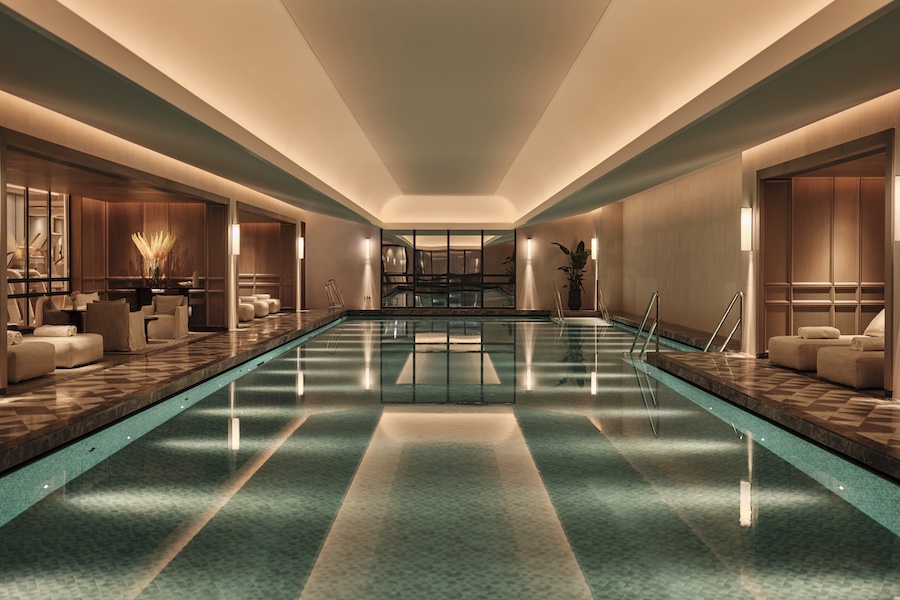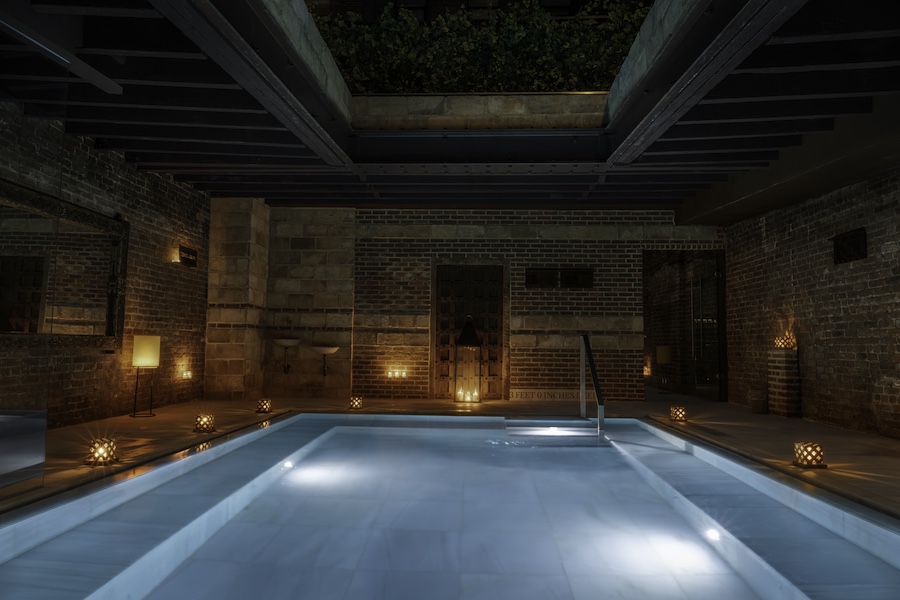 On its first anniversary, the WATG-designed Bardessono Hotel in Yountville, California, has achieved LEED Platinum certification for its rigorous sustainable initiatives, including:
On its first anniversary, the WATG-designed Bardessono Hotel in Yountville, California, has achieved LEED Platinum certification for its rigorous sustainable initiatives, including:
- Solar Power: 947 solar panels are installed on the flat roofs of the buildings but are not visible to the neighboring community. The 200-kilowatt solar energy system provides a significant portion of the Bardessono’s electrical energy requirement.
- Geothermal: Geothermal wells were drilled to work with a ground source heat pump system to heat and cool rooms and heat domestic water. The only electricity used in this system is for operation of the pumps.
- Construction: Over 93 percent of building waste was recycled.
- Reuse of materials: The stone featured on both the exterior and interior of the building was recycled from the stone blocks of an old wine cellar on the property. All of the wood visible on the exterior and interior of the buildings was milled from salvaged trees, including Monterey cypress, orchard walnut, redwood, and elm.
- Heat retention: Guestrooms are constructed to minimize solar heat gain with wide overhangs and specially designed motor-controlled exterior Venetian blinds. Large expanses of glass allow winter sunrays to naturally warm rooms and enhance daytime lighting.
- Lighting: LED and fluorescent light are used throughout the property, and IP network-driven sensors in the rooms extinguish lights when rooms are unoccupied.
- Low Water Use: The hotel has implemented low-water flow fixtures, dual flush toilets, and waterless urinals. Outdoors, drought-resistant indigenous landscaping is serviced by a buried drip irrigation system.
- Water recycling: All gray and black water is treated and recycled for irrigation uses by the Town of Yountville.
- Creek-side Protection: Buildings are set back 35 feet from Hopper Creek, with native plants installed to restore a hospitable natural environment for wildlife and fish while minimizing soil erosion.
- Compost: Bardessono composts all kitchen and garden vegetable and plant waste in an "Earth Tub."
- Rammed-earth sculptural walls and 100-year-old olive trees.
- Paving stones and sand for the entrance road to allow water to seep into the soil.



